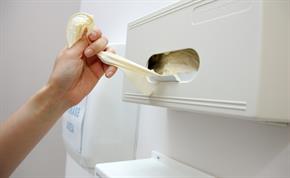Date:
19 April 2024
Page URL:
https://ntk.eastamb.nhs.uk/news/Infection-prevention-and-control-the-what-why-and-who.htm?pr=
Infection prevention and control: the what, why and who

What is infection prevention and control?
Infection control is the act of preventing the spread of microorganisms between staff members, visitors and patients.
Reducing the spread of bacteria can lower the risk of infection to both our patients and our staff, and any person involved in patient care or who comes in contact with items used in patient care must follow infection control procedures.
Who does infection, prevention and control (IPC)?
We have an IPC team within the Trust who ensure that all policies and procedure are in place and being followed.
Why is IPC important?
Every year millions of patients are affected by health-care associated infections (HCAI). These infections can lead to more serious illnesses, prolonged hospital stays, induce long-term disabilities, contribute to additional financial burdens to patients, their families and the health system, and could also be life threatening. Most HCAI are preventable through following IPC procedures.
What are standard precautions?
Standard precautions are a set of actions to be used, as a minimum, in the care of all patients. These aim to break the chain of infection. In a majority of situations, ambulance staff are not aware if a patient has an infection – it’s best to apply these precautions for all patients rather than waiting for a diagnosis. These actions are required to help minimise the spread of microorganisms and infection. The elements of standard precautions are:
- hand hygiene
- correct use of PPE
- safe handling and disposal of waste and sharps
- the safe handling of linen
- decontamination of the equipment and environment
- using an aseptic technique during invasive procedures.
Please remember: all body substances (except sweat and tears!) should be considered as a potential source of infection.
What other precautions should I take?
There are also a range of additional precautions which are adopted to manage patients who are known or suspected to have infections which are highly transmissible, e.g. pulmonary tuberculosis, clostridium difficile, norovirus, MRSA etc. These precautions are associated with the route of transmission of the micro-organism as described below:
- respiratory precautions: reduces the risk of airborne and droplet spread micro-organisms e.g. influenza, tuberculosis, SARS.
- enteric precautions: reduces the risk of micro-organisms spread by the faeco-oral route, e.g. norovirus, hepatitis A, C-diff
- contact precautions: reduces the risk of micro-organisms spread by contact e.g. MRSA, hepatitis B & C, AIDS, cold sores, conjunctivitis, scabies (prolonged contact).
We’ll be sharing more information on standard and additional precautions on Need to Know next week, so watch this space.
Published 12th October, 2015
